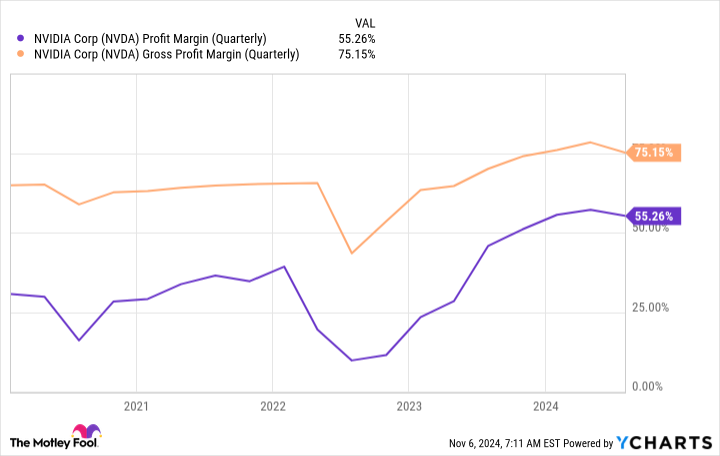Some companies’ earnings reports are ho-hum, but not so with Nvidia.
While some investors consider earnings reports boring events, this sentiment changes if the company reporting is highly influential on the market’s direction. Right now, one could argue that artificial intelligence (AI) is the most influential theme in the market, so when the AI leader reports, investors better pay attention.
Nvidia (NVDA -0.84%) is the undisputed leader in AI investing. Its graphics processing units (GPUs) are the computing muscle behind nearly all of the innovative AI models being developed, and it significantly benefited from this trend.
Nvidia reports earnings for the third quarter of fiscal 2025 on Nov. 20, making it a huge day for the market and the stock. However, stocks are known to rise or fall dramatically after earnings reports, so investors want to know, “Is Nvidia a buy before Nov. 20?”
Revenue growth is a key metric for Nvidia
Stocks fall or rise after earnings reports because the information investors receive is only one only a few looks we get into a company each year. Waiting a full quarter to hear an update from a giant like Nvidia is a long time, as the landscape shifts so much in that period.
However, the change from the second to the third quarter won’t be as large as it used to be.
In last year’s Q3 FY 2024 (ending Oct. 29, 2023), Nvidia’s revenue rose by an incredible 206% year over year. This year, it’s expected to post 80% revenue growth. While that’s a huge slowdown, 80% revenue growth is still impressive, especially considering Nvidia’s size.
When a company is growing as quickly as Nvidia is, it’s better to look at the quarter-over-quarter revenue growth, as long as the company doesn’t display seasonality (revenue rising and falling based on the seasons, like a ski resort or water park may see). Nvidia doesn’t have this issue, and in for Q3 FY2025 it expects 8.3% quarter-over-quarter revenue growth. This figure will be one to watch, as a miss on this number will show that demand isn’t growing as quickly as just a few months ago. But if it beats, then it’s clear that companies are still ramping up their AI spending.
I think it’s more likely than not that Nvidia will beat this number, as we’ve heard language from other big tech companies on their conference calls that calendar year 2025 will be a year of increased spending on AI infrastructure. While some of this spending will go toward custom chips that these companies have developed, a large chunk of it will head Nvidia’s way, setting the stage for a big quarter, at least on the revenue side of things.
The margin side could be a different story.
Nvidia must maintain its margins to justify its price tag
One part of Nvidia’s rise gets lost in the mix of unreal revenue growth: margin expansion. Since Nvidia’s GPUs were in high demand, their margins dramatically increased compared to their historical levels.
NVDA Profit Margin (Quarterly) data by YCharts
While Nvidia’s revenue growth was impressive, its profit growth was even more dramatic.
NVDA Operating Revenue (Quarterly YoY Growth) data by YCharts
This effect occurred because Nvidia’s margins expanded alongside revenue growth, but if you look closely at the first chart, you can see that Nvidia’s margins started to dip ever so slightly. This decline could have just been a slight bump in the road, but investors need to watch out if it’s a bigger trend.
Nvidia’s stock is already very highly valued, and it needs to maintain its profit levels to justify its 66 times trailing earnings and 49 times forward earnings valuation. If it can maintain this trend or at least deliver a very slight decline, this should put Nvidia in the clear, at least until after this earnings report.
So, should you buy Nvidia stock before it reports earnings? It depends. If you think the company will maintain margins and beat its revenue growth projections, then it’s likely the stock could pop after earnings. However, with the valuation at which Nvidia is trading, it needs to beat expectations on every level to increase after earnings. That’s why I’ll just be watching the report, and if an opportunity presents itself (though waiting has been a bad strategy historically), I may take a position.
Keithen Drury has no position in any of the stocks mentioned. The Motley Fool has positions in and recommends Nvidia. The Motley Fool has a disclosure policy.







